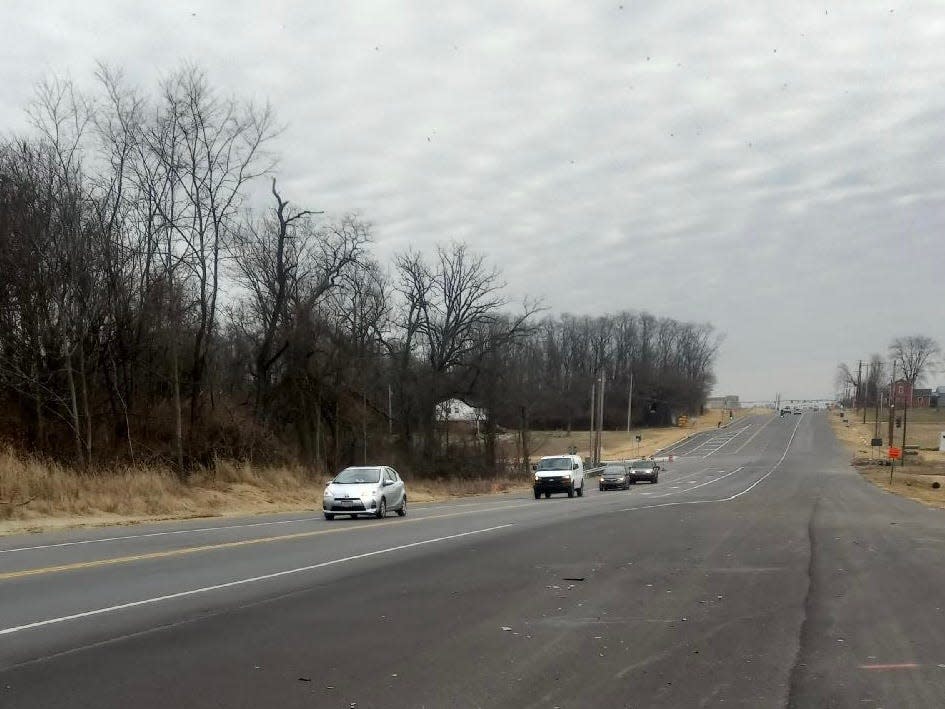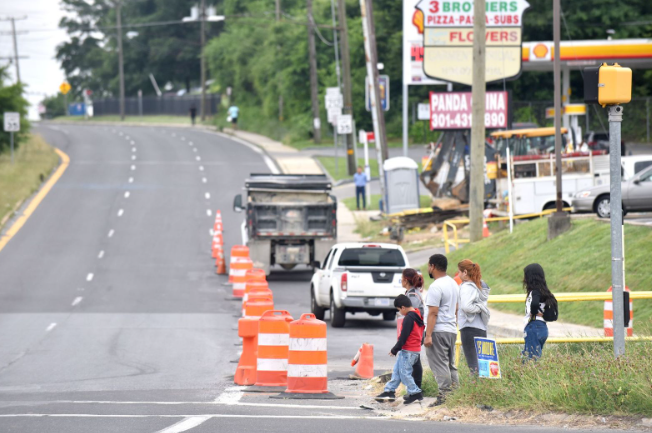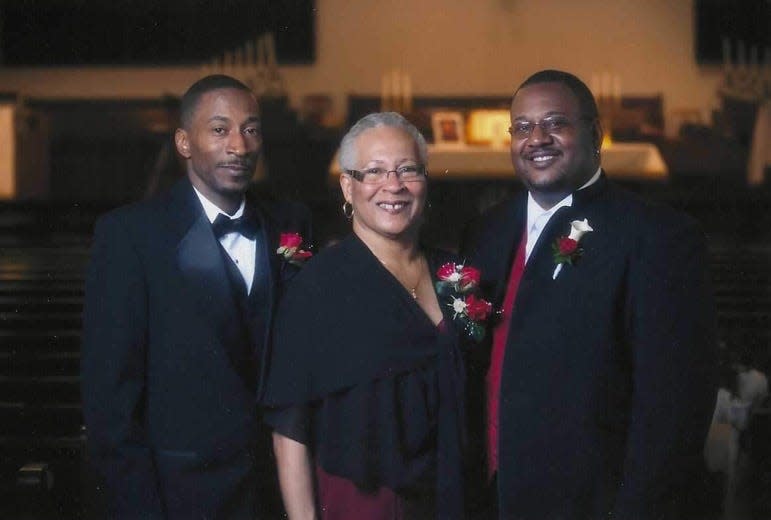Racism's deadly effects on US roads: Walking, biking are drastically more dangerous for some Americans
The last road 50-year-old Ricardo Valdez ever walked along had only two lanes, but the speed limit was 55 mph. There were no street lights to illuminate his way and no sidewalks for him on that cold, midwestern January night.
His mother isn't sure where he was going, but she knows one thing that was on his mind at the time: Saving up to leave Ohio.
He wanted to live somewhere like Trinidad and Tobago, where he spent most summers growing up visiting family, said Rhona Noel, his mother. Maybe he would have gone south with his girlfriend and son to a city by the ocean, where it was warm year-round.
She wishes the cars went slower down that road on the outskirts of Dayton, Ohio. Or that there were streetlights. Maybe that would have helped prevent the truck from hitting her son.

“There was no (sidewalk) where he was walking, so I can't tell if he was walking on the grass, I don't know. I know it was dark, very dark,” Noel said. “I have a friend who lives nearby. She said the cars go flying down that road."
No charges were filed against the driver.
American roads are being plagued with a perplexing uptick in deaths, including increasing pedestrian fatalities. But new data shows those deaths are disproportionally affecting Black and Hispanic American pedestrians and bikers.
Published in the American Journal of Preventive Medicine on June 7, a recent study found that mile-for-mile, walking and biking are drastically more deadly activities for Black and Hispanic Americans compared to white Americans.
Cycling is 4.5 times more deadly and walking is 2.2 times for Black people on American streets as compared to white people, the data says.
Ernani Choma, one of the study’s authors and a research fellow in the Department of Environmental Health at Harvard Chan School, said the study didn't set out to prove what was causing the trend.
We all have a unique perspective: Sign up for This is America, a weekly take on the news from reporters from a range of backgrounds and experiences.
"It's very troubling that we see these disparities, but we're not able to pinpoint what is the one thing, or the most important things that are causing them," he said. "But we think that it's probably very related to infrastructure investments."
But experts in pedestrian and road safety told USA TODAY the study's data makes sense when viewed as part of a larger trend: Pedestrians are put at risk by high-speed roads built with little regard for anything but the cars passing through.
And in many cases, those roads split Black and Hispanic communities, endangering residents trying to navigate their own neighborhoods.

Traffic death disparity data shows a concerning problem
Researchers have long known about racial disparities in pedestrian deaths, but the new study makes the magnitude of the problem clearer.
Matthew Raifman, the study's co-author and a doctoral candidate at Boston University School of Public Health, said previous studies didn't take into account how often and far people walked.
“When you adjust for these different levels of activity by race and ethnicity, the disparities are actually even larger than we previously thought,” Raifman said. “Because we're accounting for the fact that different race groups tend to walk and bike different miles per year.”
Raifman and Choma's study suggests a few factors that could explain the disparities, including emergency medical service responses, access to insurance, and general economic constraints.
Courtney Coughenour, a professor of public health at the University of Nevada, Las Vegas, said those social determinants of health – things like education and income – are key to reducing inequality.
"Those are the hardest things to change, but honestly, those make the most difference when we're talking about any kind of health outcome, including pedestrian crashes," she said.
But multiple experts told USA TODAY that the roads themselves were likely a big part of the problem as well.
Roads themselves can't be racist – they're just slabs of asphalt, according to Steve Davis, Assistant Vice President of transportation strategy at Smart Growth America, a nonprofit dedicated to equitable transportation development. But they are designed by people and reflect systems that can be biased, he said.
STUDY: SUVs, pickup trucks more likely to hit pedestrians than cars
PEDESTRIANS: More cities are embracing accessible pedestrian signals but blind Americans say it's not enough
“What we see now is the ways that racism has gotten more embedded in our decision-making processes in kind of invisible ways,” Davis said. “People in systems today that are very well-meaning can still produce outcomes that are inequitable and unfair."
Experts trace the problem back decades, to when the U.S. started expanding its highways to prioritize high-speed travel by car. That also meant roads were increasingly filled with hazards for pedestrians.
"We have chosen to travel predominantly in multithousand-pound vehicles," Raifman said. "We've created this world. And so it's kind of our mess to clean up."
Ever since the passage of the Federal-Aid Highway Act of 1956, American interstate highways have been scaling up. The 41,000-mile system helped modernize travel but did so at the cost of disrupting vibrant Black and Latino communities, which were often physically split by new highway projects. Neighborhoods such as Tremé in New Orleans; Rondo in St. Paul, Minnesota; and Little Mexico in Dallas.
US roads designed for cars
Road design in the U.S. has historically prioritized driving over all other modes of transportation, directing most funding to projects that increase car efficiency – often at the expense of cyclists and pedestrians, said Davis of Smart Growth America.
The group published a report in July finding most pedestrian casualties occurred on high-speed, multilane roads, which disproportionately cut through historically Black, brown and low-income neighborhoods. The combination has helped fuel the disproportionate rate of pedestrian deaths documented in the new study, Davis said.
“A lot of it has to do with what we build and where,” Davis said. “If you look at where the most dangerous streets are for pedestrians, they are mostly in low-income and communities of color."
The nonprofit's report also found that Native American pedestrians were 3.2 times as likely to be struck and killed than white Americans. Black people were twice as likely.
Building roads that are dangerous for pedestrians through communities of color is only part of the problem. How those and other roads are constructed and maintained can compound the danger.
WATCH: LA hospital sued for racism in death of Black mom
WATCH: Historic Black town faces uncertain, stormy future
“These are places that have not had the infrastructure investment, the political power and the political capital to fight for the inclusion of sidewalks and crosswalks and signalized safe crossings when roads are getting built," Davis said.
One such road Davis has researched is a stretch of University Boulevard in Prince George's, Maryland, which goes through a vibrant, largely immigrant community. The six-lane corridor is aligned with apartment buildings, restaurants, markets and local shops – yet crosswalks connecting both sides of the street are over half a mile apart, he said.

"As far as the state is concerned, this route exists for one purpose and one purpose only, and that is to move as many cars as possible, as fast as possible," Davis said. "And when you have these kinds of streets in places where people have no choice but to walk, they're exposed to more danger."
From 2009 to 2017, 138 pedestrians were struck by vehicles while crossing the highway. Eight died.
How to make US roads safer for everyone
Inequalities in road fatalities are a symptom of a sprawling problem in the United States that extends far beyond infrastructure. And experts say just fixing the infrastructure will be challenging enough.
Upgraded, more equitable roads might include new bike lanes, wider sidewalks, and fewer cars, Davis said.
Coughenour said even the urban design planning process needs to be reexamined: It needs to consider public health – not just getting more cars more places faster.
It could "do wonders" if urban designers took health outcomes into account when designing or retrofitting road infrastructure, she said.
So when local governments decide how to spend their share of the newly-announced $6 billion in federal funds in part aimed at reducing traffic casualties, pedestrian safety experts hope more than just cars will be considered, especially in Black and Latino neighborhoods that have been split by high-speed roads.
The hope: Future improvements can make roads designed for out-of-town drivers safer for the people who live there, who walk there, who bike there.
"What we are really talking about is considering the needs of everyone, and that will lead to a place that is safer and more productive and more pleasant," Davis said.
Reducing cars' speed and making sure drivers stop at red lights, for example, can help keep pedestrians safe. Raifman says speed cameras or red light cameras should be part of some road upgrades, too, adding that they "could be very helpful."
Though the road Valdez died on had no sidewalks or street lights, Montgomery County's Transportation Improvement District said pedestrian deaths aren't a common occurrence on that street. The cost of adding sidewalks would likely be greater than the expected benefit, said Steve Stanley, the department's executive director.
Valdez's death was a "tragic accident," said Stanley, but he was unsure road upgrades could have kept Valdez alive.
Valdez's family is still coping with grief six months later. His mother said she's starting to let go.
“Because it doesn't matter what happened,” Noel said. “He's dead. He's not coming back … He’s never, ever coming home again."

This article originally appeared on USA TODAY: Roads and race: Black, Hispanic pedestrians in US face more danger

